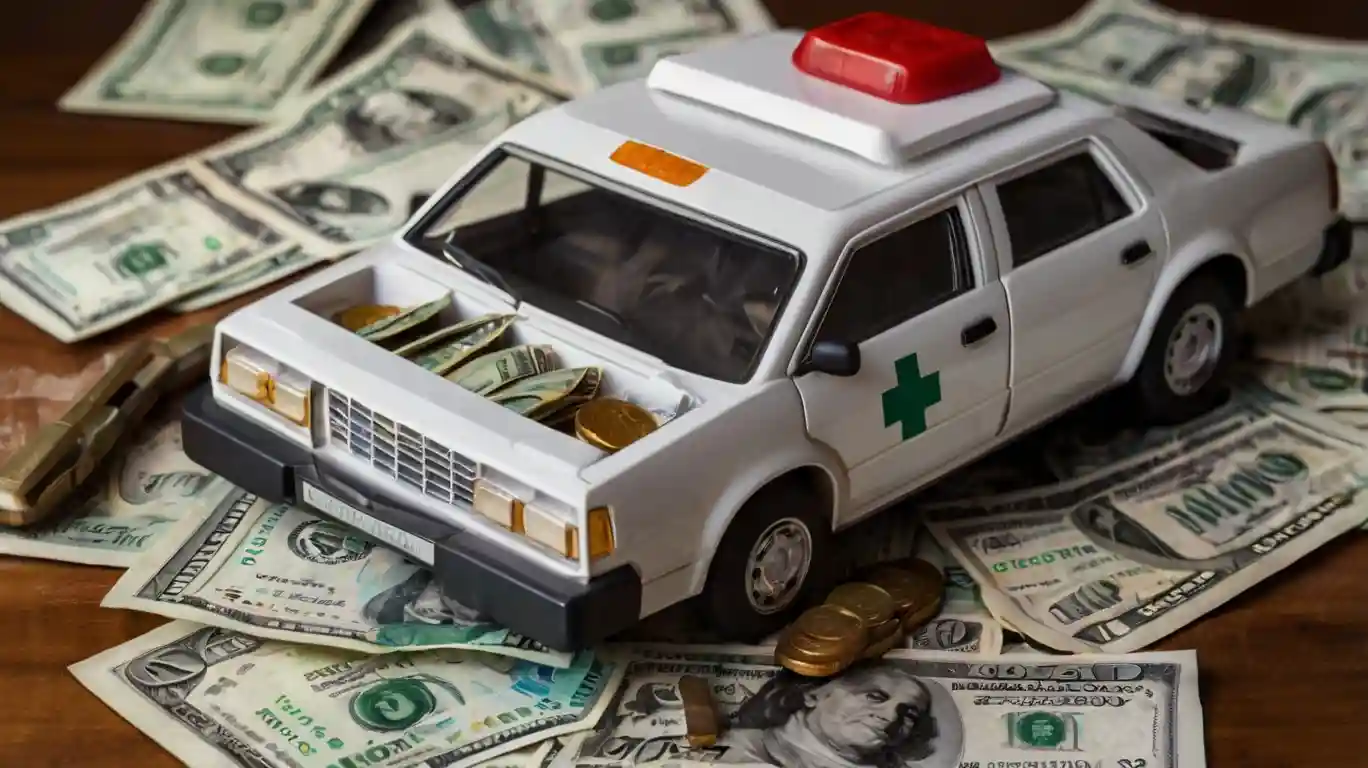In the financial world, conventional wisdom has long championed the emergency fund as the cornerstone of sound money management. Three to six months of expenses, sitting safely in a readily accessible account, waiting for life’s inevitable curveballs. It’s financial planning 101.
But what if I told you this sacred cow of personal finance might actually be bleeding you dry?
In today’s economy—marked by persistent inflation, rising interest rates, and market volatility—that dormant cash hoard might be silently eroding your wealth rather than protecting it. The financial landscape has shifted dramatically since this advice first became gospel, yet many of us cling to outdated strategies that may no longer serve our best interests.
Contents
- The Hidden Cost of Cash: How Inflation Is Eating Your Emergency Fund
- Emergency Fund Alternatives: Modern Strategies for Savvy Savers
- The Psychology of Safety: Overcoming Emergency Fund Anxiety
- Case Study: The Tale of Two Emergency Funds
- Rethinking Emergency Fund Size: The Opportunity Cost Calculation
- When Traditional Emergency Funds Still Make Sense
- The Emergency Fund Evolution: Adapting to Economic Reality
- Technology’s Role in Modern Emergency Planning
- Beyond Cash: Rethinking Financial Resilience
- Finding Your Balance: Personalizing Your Emergency Strategy
- The Bottom Line: Safety Needn’t Mean Sacrifice
The Hidden Cost of Cash: How Inflation Is Eating Your Emergency Fund
Let’s talk numbers. With inflation hovering near 3%, your emergency fund is essentially taking a 3% pay cut every year. That $10,000 safety net you’ve diligently built? It’s worth just $9,700 in purchasing power after a year. After five years? You’re down to about $8,600 in real value.
“Most people don’t realize they’re losing money by playing it too safe,” says financial planner Marcus Reynolds. “The emergency fund paradox is that while it protects you from financial emergencies, it simultaneously creates a slow-bleeding financial wound through inflation.”
This wealth erosion happens invisibly—no notifications, no statements showing negative returns. Just the silent thief of purchasing power, stealing from your future self.
Emergency Fund Alternatives: Modern Strategies for Savvy Savers
The solution isn’t abandoning emergency savings entirely—that would be jumping from the frying pan into the fire. Instead, consider these updated approaches that balance liquidity with growth potential:
High-Yield Savings Accounts: The Bare Minimum
While traditional savings accounts still offer pathetically low rates (often below 0.1%), high-yield alternatives from online banks currently pay between 3-4% APY. This won’t make you rich, but it can help your emergency fund keep pace with inflation rather than falling hopelessly behind.
Morgan Stanley’s consumer banking division reports that 68% of Americans still keep their emergency savings in traditional low-interest accounts, essentially guaranteeing negative real returns.
Treasury Bills and I-Bonds: Government-Backed Growth
Short-term Treasury bills currently offer yields around 4-5%, while I-Bonds provide inflation protection with minimal risk. These government-backed securities offer significantly better returns than traditional savings accounts while maintaining relatively easy access to funds.
“T-bills have become the smart saver’s best friend,” notes economist Priya Sharma. “They combine safety with yields we haven’t seen in years, making them ideal for emergency fund allocation.”
Money Market Funds: Liquidity Meets Higher Returns
With returns now exceeding 4% annually, money market funds have regained their appeal. These funds invest in short-term, high-quality debt instruments while maintaining daily liquidity, offering a compelling middle ground between growth and accessibility.
The Tiered Emergency Fund Approach
Perhaps the most sophisticated strategy is the tiered emergency fund—dividing your safety net into multiple layers based on timeline and likelihood:
- Immediate Tier (1 month of expenses): Keep this in a high-yield savings account for instant access.
- Secondary Tier (2-3 months): Allocate to Treasury bills or money market funds for slightly better returns.
- Extended Tier (3+ months): Consider conservative investment options like short-term bond ETFs or even a conservative mix of bond and equity ETFs.
This approach acknowledges that not all emergencies require immediate access to your entire fund. Most financial disruptions give you at least some warning or can be temporarily managed with credit cards until you can liquidate slightly less accessible assets.

The Psychology of Safety: Overcoming Emergency Fund Anxiety
The biggest obstacle to modernizing your emergency fund isn’t financial—it’s psychological. The comfort of cash feels irreplaceable, even when that comfort comes at a significant cost.
Richard Thaler, behavioral economist and Nobel laureate, coined the term “security premium”—the excess return we’re willing to forgo for the feeling of absolute safety. For many, this premium has become irrationally high in a world where traditional savings vehicles guarantee negative real returns.
To overcome this cognitive bias, consider starting small. Move 20% of your emergency fund to a higher-yield alternative and observe how it performs. Gradually increase this percentage as your comfort level grows.
“Most financial mistakes come from emotional rather than logical decisions,” explains financial therapist Dr. Lisa Brennan. “The feeling of security from traditional emergency funds often blinds people to the very real danger of inflation slowly destroying their savings.”
Case Study: The Tale of Two Emergency Funds
Consider two individuals, both with $15,000 emergency funds:
Alex keeps their entire fund in a traditional savings account earning 0.1% interest. After five years of 3% inflation, their purchasing power has declined to approximately $12,900—a loss of $2,100 in real terms.
Jordan adopts a tiered approach: $5,000 in a high-yield savings account (3.5%), $5,000 in T-bills (4.5%), and $5,000 in a conservative investment portfolio (average 5% return). After five years, their emergency fund has grown to approximately $17,800—maintaining and slightly increasing their purchasing power despite inflation.
Both have emergency funds, but Jordan’s modernized approach preserved wealth while Alex’s traditional strategy quietly bled value.
Rethinking Emergency Fund Size: The Opportunity Cost Calculation
Beyond where you keep your emergency fund, it’s worth questioning how much you truly need. The standard recommendation of 3-6 months of expenses may be excessive for some and insufficient for others.
Consider these factors:
- Income stability: Freelancers and commission-based workers need larger funds than those with guaranteed salaries.
- Insurance coverage: Comprehensive health, disability, and property insurance reduces the need for liquid cash.
- Access to credit: Available credit lines can serve as a temporary emergency backstop.
- Family support network: Those with financially secure family members may require smaller emergency reserves.
The opportunity cost of over-funding your emergency account is substantial. Every dollar above what you reasonably need for emergencies represents potential growth that’s being sacrificed on the altar of excessive caution.
“I’ve seen clients with two years of expenses in cash, earning next to nothing,” says financial advisor Jerome Williams. “That’s not prudence—it’s financial self-sabotage.”
When Traditional Emergency Funds Still Make Sense
Despite their drawbacks, traditional cash emergency funds remain appropriate in certain circumstances:
- When you’re expecting a major life change in the next 6-12 months
- During periods of personal income instability
- When you have substantial high-interest debt to tackle first
- If you have a history of impulsive financial decisions during market volatility
Even in these cases, however, high-yield savings accounts represent a strictly better option than traditional savings accounts.
The Emergency Fund Evolution: Adapting to Economic Reality
The emergency fund concept emerged in a different economic era—when savings accounts paid meaningful interest and inflation was less of a concern. Like any financial strategy, it must evolve with changing conditions.
Today’s financial reality demands a more sophisticated approach—one that respects the need for emergency liquidity while acknowledging the very real cost of idle cash in an inflationary environment.
“Your financial strategy should be adaptable, not dogmatic,” advises wealth manager Eleanor Park. “The principle of having resources for emergencies remains sound, but the execution needs updating for today’s economic landscape.”
Technology’s Role in Modern Emergency Planning
Financial technology has transformed how we can approach emergency preparedness:
- Fractional investing allows for smaller investment minimums
- Reduced trading costs make it economical to liquidate investments when needed
- High-yield accounts with digital banks offer competitive rates with traditional savings liquidity
- Automated saving tools help build emergency funds systematically
- Line-of-credit products provide backup liquidity options
These innovations make it possible to maintain emergency preparedness without sacrificing returns—an option that simply wasn’t available to previous generations.
Beyond Cash: Rethinking Financial Resilience
Perhaps the most forward-thinking approach is to expand our concept of emergency preparedness beyond just cash reserves:
- Skills and side hustles: Developing marketable skills that could generate income quickly
- Network development: Building professional relationships that could lead to quick employment
- Physical preparations: Storing essential supplies to reduce expenses during hardship
- Insurance optimization: Using appropriate insurance products to transfer financial risks
These complementary strategies don’t replace the need for financial reserves but can reduce the amount of cash required to weather difficulties.
Finding Your Balance: Personalizing Your Emergency Strategy
The optimal emergency fund strategy isn’t universal—it depends on your circumstances, risk tolerance, and financial goals. Consider these questions:
- What specific emergencies am I most likely to face?
- How quickly would I need access to funds in each scenario?
- What’s my personal risk tolerance for investment fluctuations?
- What’s the opportunity cost of my current emergency fund strategy?
Your answers should guide a personalized approach that balances protection with growth potential.
The Bottom Line: Safety Needn’t Mean Sacrifice
The fundamental truth is this: financial security and growth aren’t mutually exclusive goals. Today’s economy offers numerous ways to maintain emergency preparedness without condemning your money to inflation-induced decay.
The most dangerous financial risks aren’t always the obvious ones. Sometimes, they’re the slow, invisible erosions that compound over time—like watching your emergency fund lose purchasing power year after year.
By rethinking this foundational element of your financial plan, you can ensure your safety net actually protects your financial future rather than quietly undermining it.
The emergency fund isn’t dead—but perhaps it’s time for an evolution.


